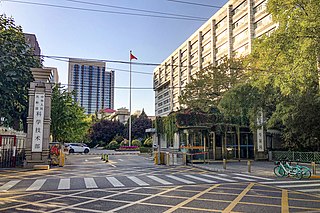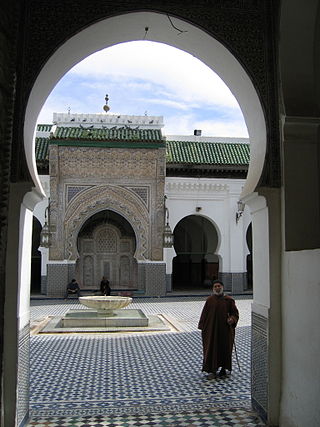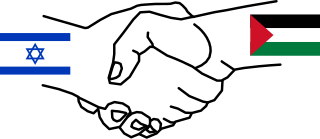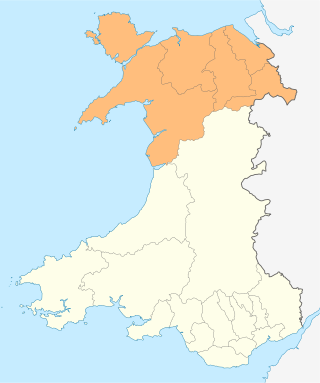
Science and technology in Israel is one of the country's most developed sectors. Israel spent 4.3% of its gross domestic product (GDP) on civil research and development in 2015, the highest ratio in the world. In 2019, Israel was ranked the world's fifth most innovative country by the Bloomberg Innovation Index. It ranks thirteenth in the world for scientific output as measured by the number of scientific publications per million citizens. In 2014, Israel's share of scientific articles published worldwide (0.9%) was nine times higher than its share of the global population (0.1%).

China Development Bank (CDB) is a policy bank of China under the State Council. Established in 1994, it has been described as the engine that powers the national government's economic development policies. It has raised funds for numerous large-scale infrastructure projects, including the Three Gorges Dam and the Shanghai Pudong International Airport.

The U.S. African Development Foundation (USADF) is an independent U.S. government agency established by Congress in 1980 to invest directly in African grassroots enterprises and social entrepreneurs. USADF's investments aim to increase incomes, revenues, and jobs by promoting self-reliance and market-based solutions to poverty. USADF targets marginalized populations and underserved communities in the Sahel, Great Lakes, and the Horn of Africa. It partners with African governments, other U.S. government agencies, private corporations, and foundations to achieve transformative results.

Foreign direct investment in Iran (FDI) has been hindered by unfavorable or complex operating requirements and by international sanctions, although in the early 2000s the Iranian government liberalized investment regulations. Iran ranks 62nd in the World Economic Forum's 2011 analysis of the global competitiveness of 142 countries. In 2010, Iran ranked sixth globally in attracting foreign investments.

The Alberta Heritage Savings Trust Fund(HSTF) is a sovereign wealth fund established in 1976 by the Government of Alberta under then-Premier Peter Lougheed. The Heritage Savings Trust Fund was created with three objectives: "to save for the future, to strengthen or diversify the economy, and to improve the quality of life of Albertans." The operations of the Heritage Savings Trust Fund are subject to the Alberta Heritage Savings Trust Fund Act and with the goal of providing "prudent stewardship of the savings from Alberta's non-renewable resources by providing the greatest financial returns on those savings for current and future generations of Albertans." Between 1976 and 1983 the Government of Alberta deposited a portion of oil revenue into the fund. The Heritage Savings Trust Fund used oil revenues to invest for the long term in such areas as health care, education and research and as a way of ensuring that the development of non-renewable resources would be of long-term benefit to Alberta. The strategy and goals of the fund have changed through successive provincial governments which moved away from direct investments in Alberta to a diversified approach, which now includes stocks, bonds, real estate and other ventures.

The Ministry of Science and Technology is the executive department of the Central Science and Technology Commission, which coordinates science and technology activities in the country. The office is located in Xicheng District, Beijing.

Science and technology in Morocco has significantly developed in recent years. The Moroccan government has been implementing reforms to encourage scientific research in the Kingdom. While research has yet to acquire the status of a national priority in Morocco, the country does have major assets that could transform its R&D sector into a key vehicle for development. The industry remains dominated by the public sector, with the universities employing 58% of researchers. Morocco's own evaluation of its national research system – carried out in 2003 – revealed that the country has a good supply of well trained high quality human resources and that some laboratories are of very high quality. However, the greatest gap at that point of time lied in the link between research and innovation. The educational qualifications of Moroccan researchers have increased significantly since the early 1990s. The University of Al-Karaouine is considered the oldest continuously operating academic degree-granting university in the world.
Water supply and sanitation in Lebanon is characterized by a number of achievements and challenges. The achievements include the reconstruction of infrastructure after the 1975–90 Civil War and the 2006 war with Israel, as well as the reform of the water and sanitation sector through a water law passed in 2000. The law created four Regional Water Establishments to consolidate numerous smaller utilities.

The Israel Innovation Authority (IIA) is the support and investment arm of the Israeli government, in charge of planning and executing the country’s innovation policy, promoting technological innovation and Research and Development (R&D) in the State of Israel.

Israel–South Korea relations refers to the diplomatic, commercial and cultural ties between Israel and South Korea. South Korea has maintained relations with Israel since 1948, and in 1962 both states initiated official diplomatic relations. Israel and South Korea have expressed interest in strengthening the relationship in all areas, particularly defence, but also renewable energy, science and technology, and bilateral trade. Israel and South Korea signed a free trade agreement in 2021.

Manufacturing USA, previously known as the National Network for Manufacturing Innovation, is a network of research institutes in the United States that focuses on developing manufacturing technologies through public-private partnerships among U.S. industry, universities, and federal government agencies. Modeled similar to Germany's Fraunhofer Institutes, the network currently consists of 16 institutes. The institutes work independently and together on a number of advanced technologies.
The Valley of Peace initiative is an effort to promote economic cooperation between Israel, Jordan, and Palestine based around efforts and joint projects in the Arava/Arabah Valley, along which runs the southern portion of the Israel - Jordan border. It received the personal attention and support of Shimon Peres, President of Israel. The initiative involved ongoing joint efforts by regional leaders to launch joint new industrial and economic projects, which will create new local businesses and job growth, and promote ongoing cooperation.

Mikayil Chingiz oghlu Jabbarov is an Azerbaijani politician who is the current Minister of Economу of Azerbaijan

Israeli–Palestinian economic peace efforts refers to efforts to promote joint economic projects between Israelis and Palestinians, as a pathway to reach peace between the two groups.

Hong Kong–Israel relations refer to relations between Hong Kong and Israel. Israel has a consulate in Hong Kong, while Hong Kong is represented through the Hong Kong Economic and Trade Office in addition to the Chinese embassy in Tel Aviv.

The U.S. Russia Foundation (USRF) is an American non-profit organization founded in 2008 that aims to strengthen relations between the United States and Russia and to promote the development of the private sector in the Russian Federation. While initially established with its headquarters in Moscow, the organization attracted negative attention from the Russian government and relocated to Washington, D.C. in 2015.
Science and technology in Kazakhstan – government policies to develop science, technology and innovation in Kazakhstan.
Science and technology in Uzbekistan examines government efforts to develop a national innovation system and the impact of these policies.

Vietnam joined the World Bank Group (WBG) on 21 September 1956. Before the mid-1980s, Vietnam was one of the world's least developed countries. A series of economic and political reforms launched in 1986, known as Đổi Mới, caused Vietnam to experience rapid economic growth and development, becoming a lower middle-income country. The World Bank (WB) has maintained a development partnership with Vietnam since 1993. As of 25 March 2019, it has committed a total of US$24 billion in loans, credits, and grants to Vietnam through 165 operations and projects, 44 of which are active as of 2019 and comprise US$9 billion. With an estimated extreme poverty rate below 3% and a GDP growth rate of 7.1% in 2018, Vietnam's economy continues to show fundamental strength and is supported by robust domestic demand and export-oriented manufacturing.

Ambition North Wales is a joint committee and decision-making body overseeing the North Wales Growth Deal, a regional economic growth deal covering the North Wales region. It is a partnership between the six local authorities of Conwy County Borough, Denbighshire, Flintshire, Gwynedd, Isle of Anglesey, and Wrexham County Borough, and other local partners in the region, including Bangor University, Wrexham University, Grŵp Llandrillo Menai, Coleg Cambria, and various private sector representatives.















